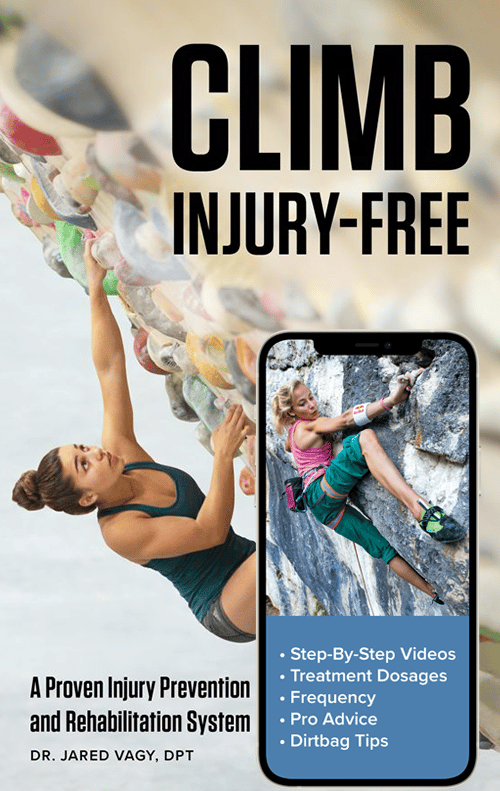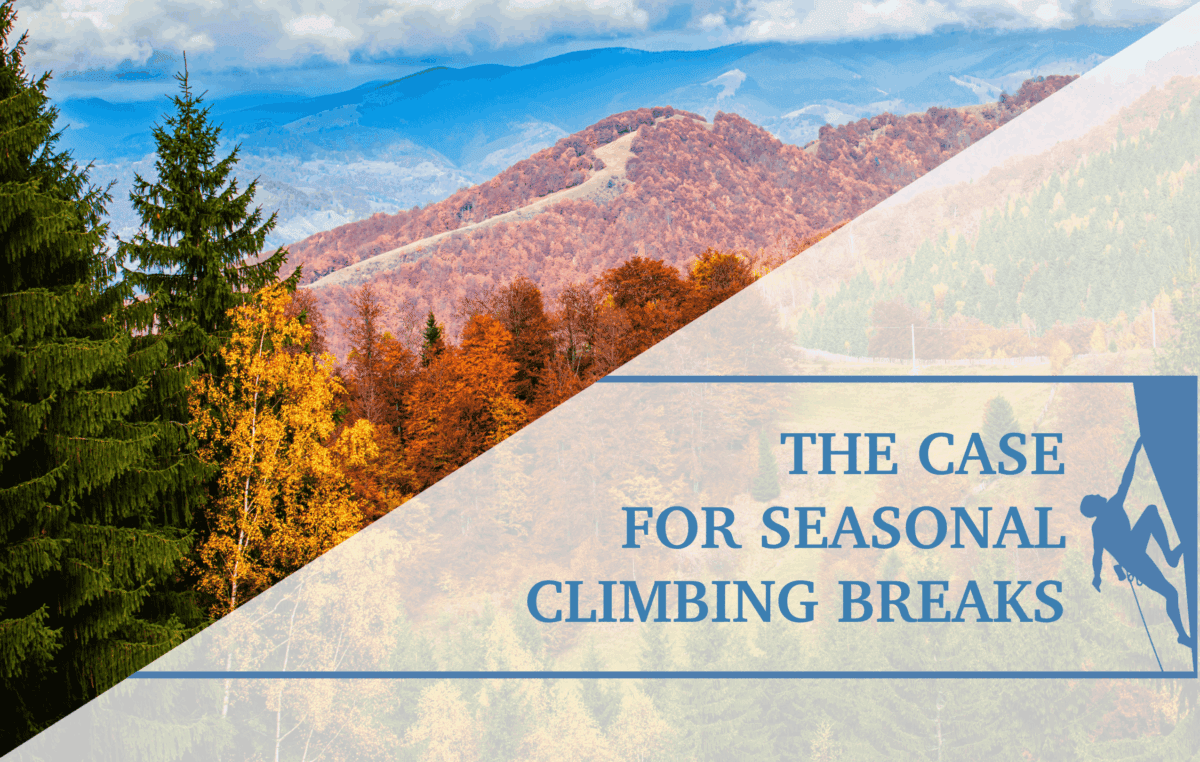Joint Health: Can I Keep Climbing Forever?
When I found rock climbing, let me tell you I fell in love. This sport and the community it provides is something I recommend to everyone. Sometimes when I do recommend it, I get told by others that they don’t want to destroy their bodies or get arthritis in the next 5 years. I get told that rock climbing is going to make me HURT later in life, so I should just stop by the time I’m in my 30’s. I look around my climbing gym and I think, that CAN’T be right. I see climbers well into their 50’s that are sending projects several grades above me and they do it with ease.
So what’s the secret? How can we all end up like them, making our climbing career as long as we want? Can someone rock climb for years and still take care of their body? Of course they can! We are here to talk about the upper extremities and common sources of pain, as well as some exercises to consider implementing on your off days to promote joint health as you continue to climb.
THE SHOULDER
The most common sources of shoulder pain in climbers are from the labrum, the long biceps tendon, and cartilage1. In addition, research has found no difference in rotator cuff or AC joint degeneration in climbers versus non-climbers1. This means that instability in the shoulder joint and repetitive strain on muscles like the biceps tendon are causing the problems with shoulder pain. The prevalence of shoulder pain in the lifetime of a rock climber is at 77%1, meaning it’s a common problem, and you’re not alone.
The labrum is a thick tissue inside the shoulder joint that helps keep the ball and socket joint together, creating stability in a joint with so much available motion. When the labrum is affected, it can create feelings of instability, clicking, and popping in the joint. When the labrum is lacking, we need to provide more stability to the shoulder through muscle strength. Some of the muscles we need to work on include your rotator cuff muscles, trapezius muscles, latissimus dorsi, and serratus anterior2.
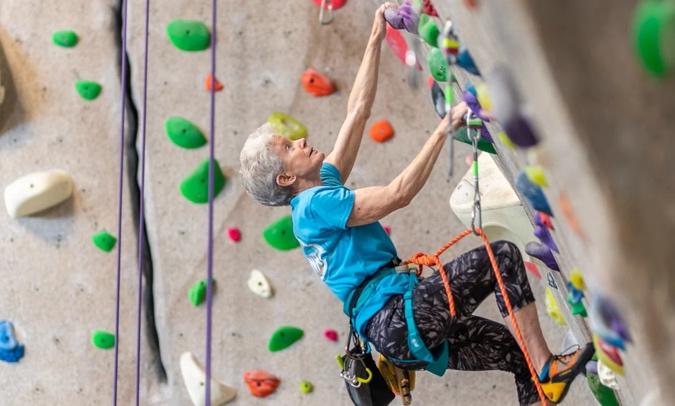
What if I don’t have any issue with instability? Should I still be reading? Yes! Maintaining stability through exercises as a form of preventative care can help limit incidence of injury down the line, promoting longevity of your climbing career6.
A study in 2021 looked at whether progressive resistance in tandem with manual therapy or motor control exercises would improve the isometric strength of scapulohumeral muscles in patients with shoulder pain2. They found that both groups saw an improvement, but the progressive resistance and manual therapy group saw a greater improvement in isometric strength2.
Here are some tools from a study looking at progressive home-based shoulder exercises for you to try on non-climbing days. These exercises promote stability in the shoulder and shoulder joint health. No time to train on the off days? Use these exercises as a warm up as another way to prevent injury and promote longevity!
Shoulder Banded External Rotation3
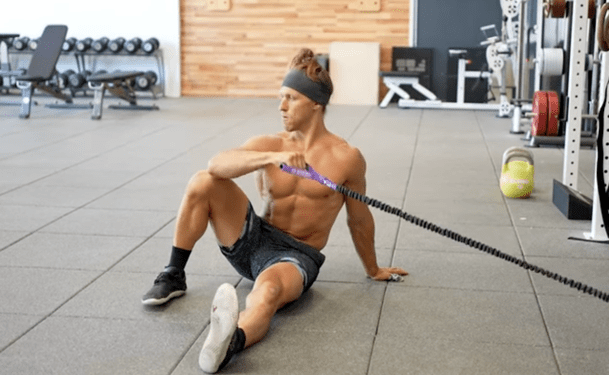
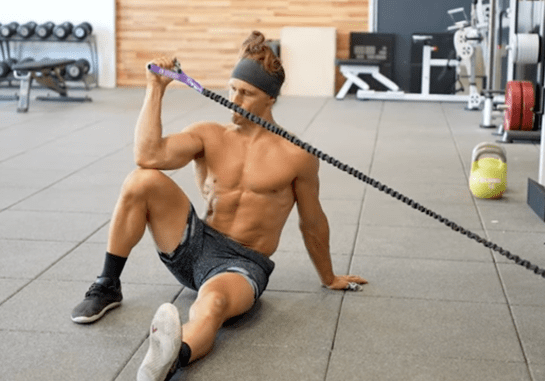
4
Resisted PNF (Proprioceptive Neuromuscular Facilitation)3
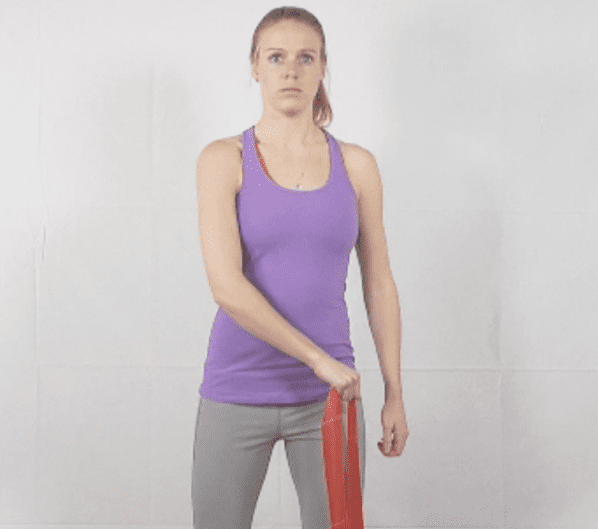
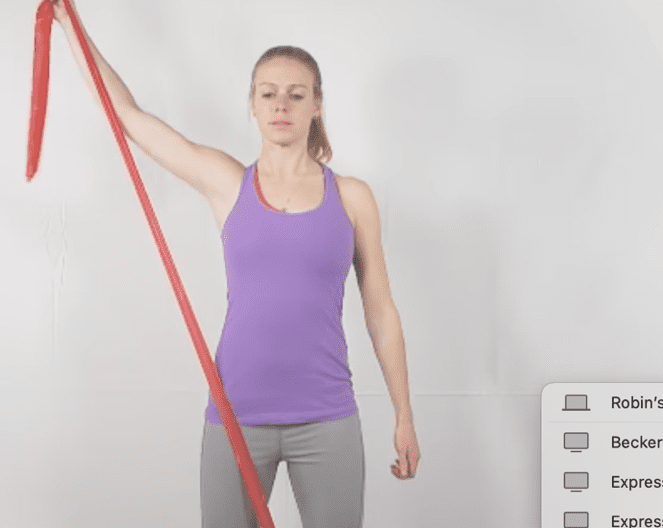
5
Quadruped Push Ups – “Camels”
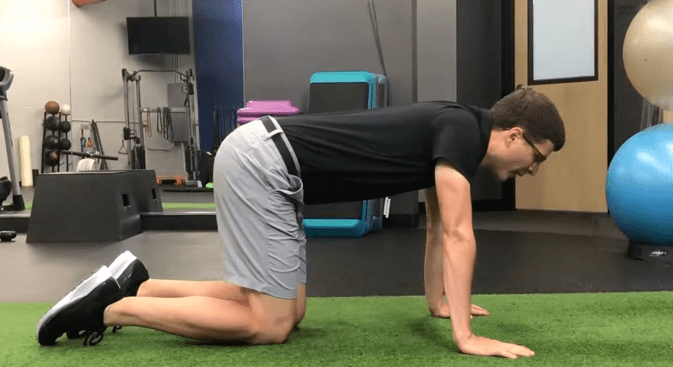
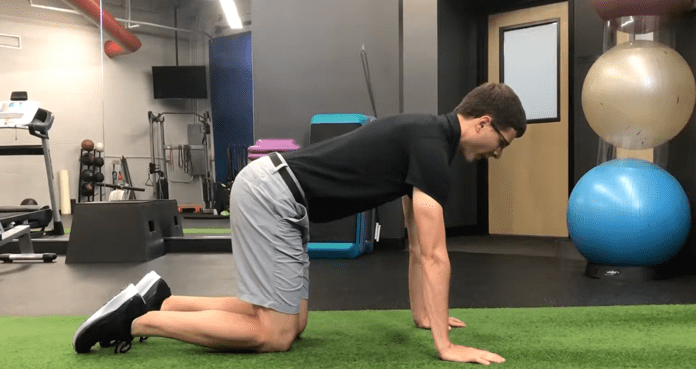
7
For these exercises, try to aim for 2-3 sets of 10 repetitions, keeping control of the movement as you go. No need to add crazy amounts of weight or do 100 reps in a day. Consistency and a healthy dose of movement will go a long way.
Interested in the manual therapy aspect of treatment for an injury or overuse issue? This is one of many things a physical therapist can offer you to help treat your shoulder pain, in addition to even more exercises that may benefit you individually!
THE HAND/FINGERS
This may be the part of this article you all came to see. The hand and fingers: the lifeblood of a rock climber. The most common injuries for climbers in this region were finger tendon injury, abrasions/lacerations, and fractures10. Tendons are responsible for attaching muscle to bone. Since tendons are a part of muscle, this means they have blood supply and they can get stronger with exercise. Strengthening the tendons in your fingers can help support your finger joints when increased stress is placed on them as you are climbing.
Fingerboard training is a great way to build stronger tendons and ligaments in the fingers, supporting the finger joints and minimizing tendon injury as you climb on. However, it is best to begin if you are a seasoned climber.
A study in 2023 by Sjöman et al. used a web-based to collect information on self-perceived pain or injury in fingers and regular fingerboard training.8 In the study, fingerboard training was connected to less finger problems in a group of seasoned climbers with at least 6 years of experience. In the group with less experience but ability to climb 7a or higher, fingerboard training was connected to more injuries.8 The study suggested that performing “regular fingerboard training may prevent self-perceived pain or injury in fingers in climbers with a long background in the sport as fingerboard training can help build stronger fingers and thereby stronger tendons and ligaments. Climbers with fewer years in the sport and less adaptation to the fingers should be cautious with their training loads and RFT to avoid finger injuries and pain.”
There’s a lot of advice out there on how to hang board train, and not a lot of time to sort through it all. Here’s a source that provides some starting guidelines on fingerboard training, technique, and how to perform safely.
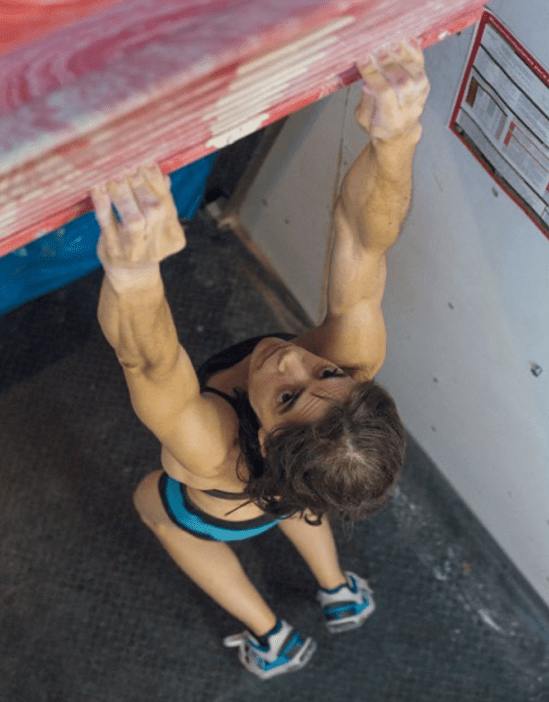
Rock climbing puts a lot of stress on the hands and fingers, as we all know. You will be happy to hear that rock climbers are not at an increased risk of developing osteoarthritis compared to non-climbers9. Yay! However, this increased stress on the joints of the hand and fingers can cause a lot of overuse injuries and joint swelling, also known as capsulitis or synovitis. A great way to prevent injury and promote long term joint health is by warming up before every climbing session. I am no saint when it comes to skipping my warm up and jumping into routes because I’m ready to send my project. But if sending projects until you’re 40, 50, even 70 years old is the goal, warming up is the golden ticket.
And this doesn’t just apply to the hands and fingers! The same story goes for the rest of the body. So remember those warm ups! Here are some exercises for the wrist and hand that promote joint health and can be a great addition to your warm up.
Tendon Glides

11
Towel Wringing

12
Resistance Band Flicks

13
These exercises follow the same playbook as the shoulder. Try to aim for 2-3 sets of 10 repetitions, keeping control of the movement as you go.
WRAP UP
So did we figure out the secret? Well, a juicy warm up is definitely a big ingredient. Exercises that promote stabilization and mobility are great for joint health and climbing preparation. The take home message here: take care of your body and it will take care of you. Are you reading this and thinking you may need a more in depth look at what is causing your pain? Physical therapy is a great way to get a sense of your movement patterns, find your limitations, and figure out a way to move that works for YOU. Learn more about physical therapy and what it can do for you through the American Physical Therapy Association.
AUTHOR BIO
Robin Martinez is a doctor of physical therapy student at University of Florida in her final year of study
REFERENCES
- Beeler S;Pastor T;Fritz B;Filli L;Schweizer A;Wieser K; “Impact of 30 Years’ High-Level Rock Climbing on the Shoulder: An Magnetic Resonance Imaging Study of 31 Climbers.” Journal of Shoulder and Elbow Surgery, U.S. National Library of Medicine, 2 Feb. 2021, pubmed.ncbi.nlm.nih.gov/33545338/.
- Sharma S;Ghrouz AK;Hussain ME;Sharma S;Aldabbas M;Ansari S; “Progressive Resistance Exercises plus Manual Therapy Is Effective in Improving Isometric Strength in Overhead Athletes with Shoulder Impingement Syndrome: A Randomized Controlled Trial.” BioMed Research International, U.S. National Library of Medicine, 30 June 2021, pubmed.ncbi.nlm.nih.gov/34307681/.
- Clausen MB;Bandholm T;Rathleff MS;Christensen KB;Zebis MK;Graven-Nielsen T;Hölmich P;Thorborg K; “The Strengthening Exercises in Shoulder Impingement Trial (the SEXSI-Trial) Investigating the Effectiveness of a Simple Add-on Shoulder Strengthening Exercise Programme in Patients with Long-Lasting Subacromial Impingement Syndrome: Study Protocol for a Pragmatic, Assessor Blinded, Parallel-Group, Randomised, Controlled Trial.” Trials, U.S. National Library of Medicine, pubmed.ncbi.nlm.nih.gov/29499710/. Accessed 2 Dec. 2023.
- Functional Bodybuilding. “Elbow on Knee Banded External Rotation.” YouTube, YouTube, 24 June 2022, www.youtube.com/watch?v=XqtVIPsofdE.
- MGHOrthpaedics. “Resistance Band PNF Pattern.” YouTube, YouTube, 10 Dec. 2014, www.youtube.com/watch?v=drrZU2gBWOg.
- Oliver, Hilary. “What It’s like to Start Climbing in Your 60s.” Outdoor Research, 13 Nov. 2019, www.outdoorresearch.com/blogs/stories/what-its-like-to-start-climbing-in-your-60s.
- “Quadruped Scapular Push-Up.” YouTube, YouTube, 3 Sept. 2019, www.youtube.com/watch?v=WJraJbTJY_E.
- MV;, Sjöman AE;Grønhaug G;Julin. “A Finger in the Game: Sport-Specific Finger Strength Training and Onset of Injury.” Wilderness & Environmental Medicine, U.S. National Library of Medicine, Dec. 2023, pubmed.ncbi.nlm.nih.gov/37550103/.
- Sylvester, Adam D, et al. “Factors Influencing Osteological Changes in the Hands and Fingers of Rock Climbers.” Wiley Online Library, 2006, onlinelibrary.wiley.com/doi/epdf/10.1111/j.1469-7580.2006.00640.x.
- J;, Logan AJ;Makwana N;Mason G;Dias. “Acute Hand and Wrist Injuries in Experienced Rock Climbers.” British Journal of Sports Medicine, U.S. National Library of Medicine, Oct. 2204, pubmed.ncbi.nlm.nih.gov/15388536/.
- Abdolrazaghi, Hossein Ali, et al. “Effectiveness of Tendon and Nerve Gliding Exercises in the Treatment of Patients with ild Idiopathic Carpal Tunnel Syndrome – Sage Journals.” Sage Journal, 15 Apr. 2021, journals.sagepub.com/doi/abs/10.1177/15589447211006857?journalCode=hana.
- Kajary, Cat. “Give Yourself a Hand: Forearm and Wrist Exercises.” Body Harmonics, 10 Mar. 2020, www.bodyharmonics.com/give-yourself-a-hand-forearm-exercises/.
- Jared, Vagy. “Clinical Management of Finger Joint Capsulitis/Synovitis in a Rock Climber.” Frontiers in Sports and Active Living, U.S. National Library of Medicine, 25 May 2023, pubmed.ncbi.nlm.nih.gov/37325798/.
- Disclaimer – The content here is designed for information & education purposes only and the content is not intended for medical advice.

